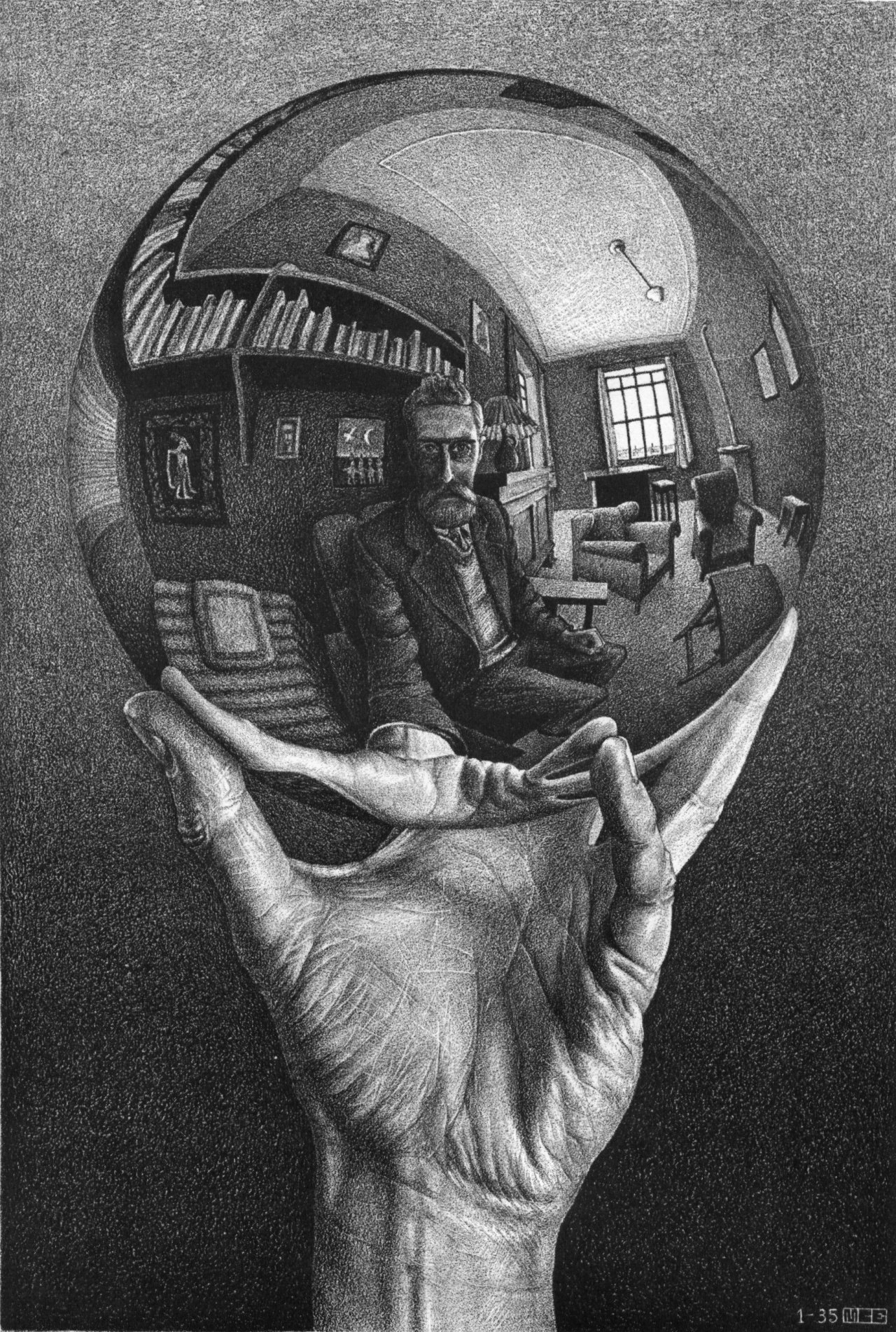What is 'Free Association’?
Self-Portrait in Spherical Mirror, Lithograph by M. C. Escher, 1935
Free association in psychology is a therapeutic technique developed by Sigmund Freud, which invites patients to express whatever comes to mind without censorship or judgment. This method was devised to access unconscious thoughts and memories, facilitating self-discovery by uncovering aspects of the psyche otherwise hidden. The approach was a departure from hypnosis, a tool used by Freud’s mentor, Josef Breuer, where Freud observed limitations due to patients' conscious resistance to confronting painful memories. Through free association, patients speak spontaneously, allowing their thoughts to flow naturally, revealing insights into their inner conflicts and unconscious processes.
Freud emphasized the importance of patients articulating their thoughts in their own words rather than relying on suggestions from the therapist, a distinction he believed was vital for true self-analysis. This approach enabled patients to explore their emotions and memories more authentically, rather than just echoing interpretations from the analyst. Freud’s encounter with a client, "Miss Elisabeth," who protested interruptions to her train of thought, reinforced his belief in the importance of uninterrupted free association, ultimately shaping the method’s evolution as a core technique in psychoanalysis.
The origins of free association also drew on influences outside Freudian psychoanalysis. Friedrich Schiller and Ludwig Börne, who encouraged creative expression without self-censorship, and Sir Francis Galton, whose studies on associative responses suggested links to unconscious processing, contributed to the conceptual development of this method. In literature, the technique is similar to the “stream of consciousness” writing style, used by writers like Virginia Woolf, which mirrors the natural flow of thoughts that free association seeks to capture.
River Reflections, Artist and Year of Painting Unknown
In practice, free association involves a non-judgmental space where patients vocalize thoughts without regard to relevance or propriety. The psychoanalyst James Strachey described it as the first scientific tool for examining the mind, suggesting that while the process may initially seem chaotic, recurring themes and connections eventually emerge, offering deep personal insights. This technique functions less as a structured narrative and more as a journey, where spontaneous thoughts lead to new realizations about oneself, thereby helping individuals integrate their thoughts, feelings, and self-understanding.
Over time, free association has been refined and expanded upon by other psychoanalysts, like Carl Jung and Sándor Ferenczi, and inspired later psychological tools like Rorschach’s Inkblot Test and the Thematic Apperception Test. However, the technique has also faced criticism, especially from object relations theorists, who argue that too much freedom in association can sometimes lead to resistance or hinder interpretation. Despite these critiques, free association remains a cornerstone in psychoanalysis, reflecting Freud's radical vision of unrestricted self-expression as a pathway to deeper psychological insight.



